Pricing in a soft landing
There are many sources of uncertainty as we head into 2023, chief amongst investors being the ability of global central banks to engineer a “soft landing”.
Changing geopolitical dynamics, unsustainable sovereign debt levels, persistently high inflation and a deteriorating outlook for consumer spending are just some of the risks investors must face – and in the process, hope to answer the question, “can we get out of this without a meaningful slowdown?”.
Our internal recession indicator for the US has been signalling a recession since May 2022, with that signal only growing stronger (implying a more aggressive downturn) with each passing month. Many commentators are calling this “the most anticipated recession of all time”.
The Conference Board US Leading Indicator just showed another -1.0% contraction, down 4.2% from June to December 2022.
And yet, we don’t observe markets pricing in this level of economic doom.
Rather, a goldilocks environment of slowing (rather than “slow”) growth, rapidly falling inflation and a consumer which skates by relatively unscathed appears to be the base case being factored into current market dynamics. In an environment where investors need to be flexible and hold ‘just enough’ risk in their portfolios to navigate through uncertain waters, what can we learn from these market dynamics which might shed light on future risks?
The Cuts Will Come Out, Tomorrow
The evolution of implied rates has been one of the key drivers of market sentiment for the last year – with risk takers eagerly sitting enraptured by FOMC speeches, waiting for the day that the rate cuts come and save their returns.
At present moment, the futures market is predicting that the Federal Reserve will execute two more 0.25% hikes, before pausing for most of the year and then cutting back to exactly where we are today by December 2023:
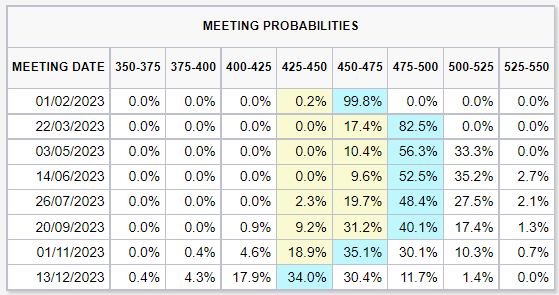
On a longer time horizon, we can use different measures of overnight index swaps (OIS curves) to see what market participants are forecasting rate hikes/cuts to be.
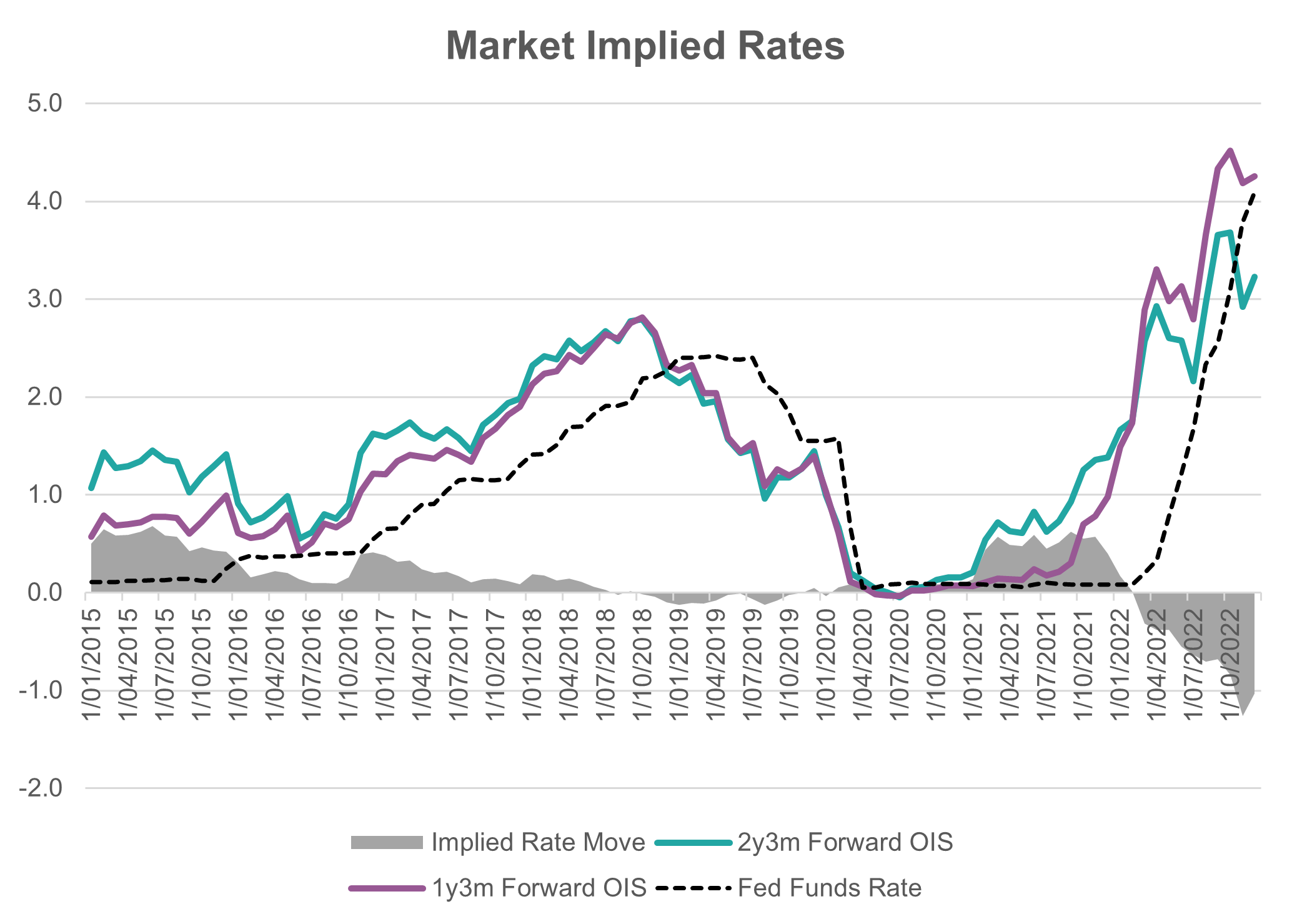
As of today, futures markets are pricing in 1.0% rate cuts over the next two years. As a guide, nearly every recession (excluding 2000) between the 1950s to 2008 saw rate cuts of between 45 – 90%, from the peak rate prior to the recession to the rate at the end of the recession.
Based on that framework, the market would be pricing in between 1.8% to 3.9% in cuts from today’s Fed Funds Rate if it was pricing in a recessionary environment.
Does this mean those implied rate cuts will eventuate? Absolutely not. The market has been forecasting cuts since March 2022, and rates have increased by 4% since then.
However, it does give an insight into market sentiment and the near-term expectations that investors are working off – we are collectively pricing in market cuts on the way, which means risky assets like equities are also pricing in a more accommodating central bank coming to their rescue.
Inflation - Can We Pivot?
Based
on historical precedent, could the Fed cut rates right now, given the still
high levels of inflation?
Historically, once US CPI exceeds 6%+, interest rates need to exceed the level of headline CPI in order for inflation to start cooling. We are not at that level yet, but if CPI continues on its current trajectory, we may see that cross-over around mid-2023.
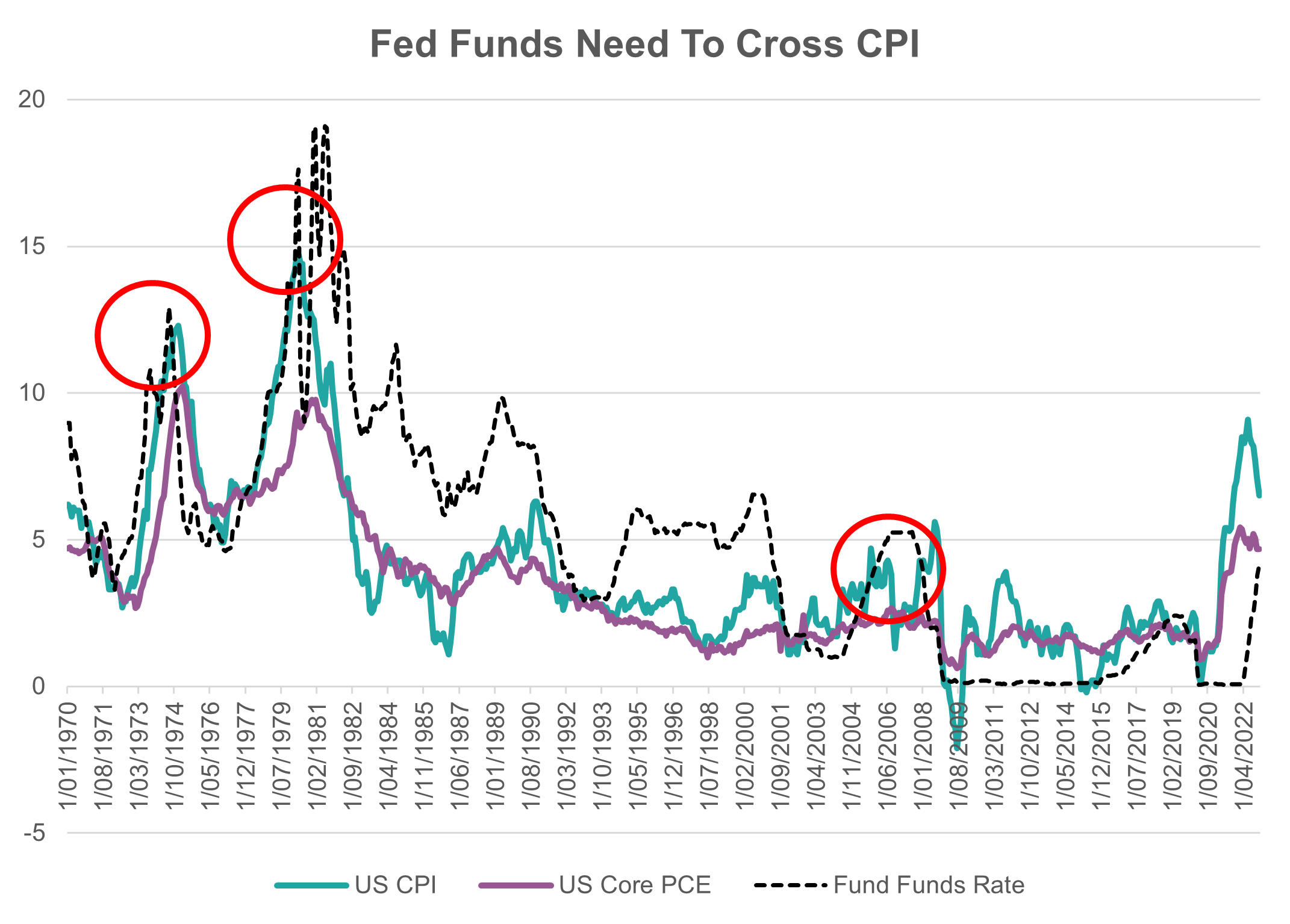
However, even if CPI falls to ~4.5% to cross over with Fed Funds, that is still over double the Fed’s target – will the Fed maintain a tight policy stance until they have absolute certainty that CPI has returned to 2%? If so, this could very well lead to overtightening. We cannot write that off as a possibility.
In fact, throughout time across multiple nations, and particularly the US, a pivot in central bank policy does not come during times of relative prosperity with a cheer of “mission accomplished”, these policy rotations are generally associated with dire circumstances which require monetary support to escape from. Not a certainty, but worth keeping in mind that the hope for a Fed pivot may in fact be hope for bad times to come.
Markets Pricing in Goldilocks
It’s possible to fill up multiple research papers on indicators for what the market is pricing in as a future economic landscape – in fact many have. For sake of a brief yet informative note, we’ll focus on three: commodities, credit spreads and earnings.
For commodities, its worth looking at the metal with the PhD in Economics, copper. As an input to a broad range of manufacturing processes throughout the real economy, the price of copper can be broadly indicative of where speculators and large suppliers believe economic activity will be in the future.
Of the three examples we’ve chosen to look at here, copper is the only one which is appearing relatively negative on the future economic outlook. YoY changes are almost in line with those seen in 2001 and COVID – granted there is an element of cyclicality here after the phenomenally strong recovery the commodity saw after COVID.
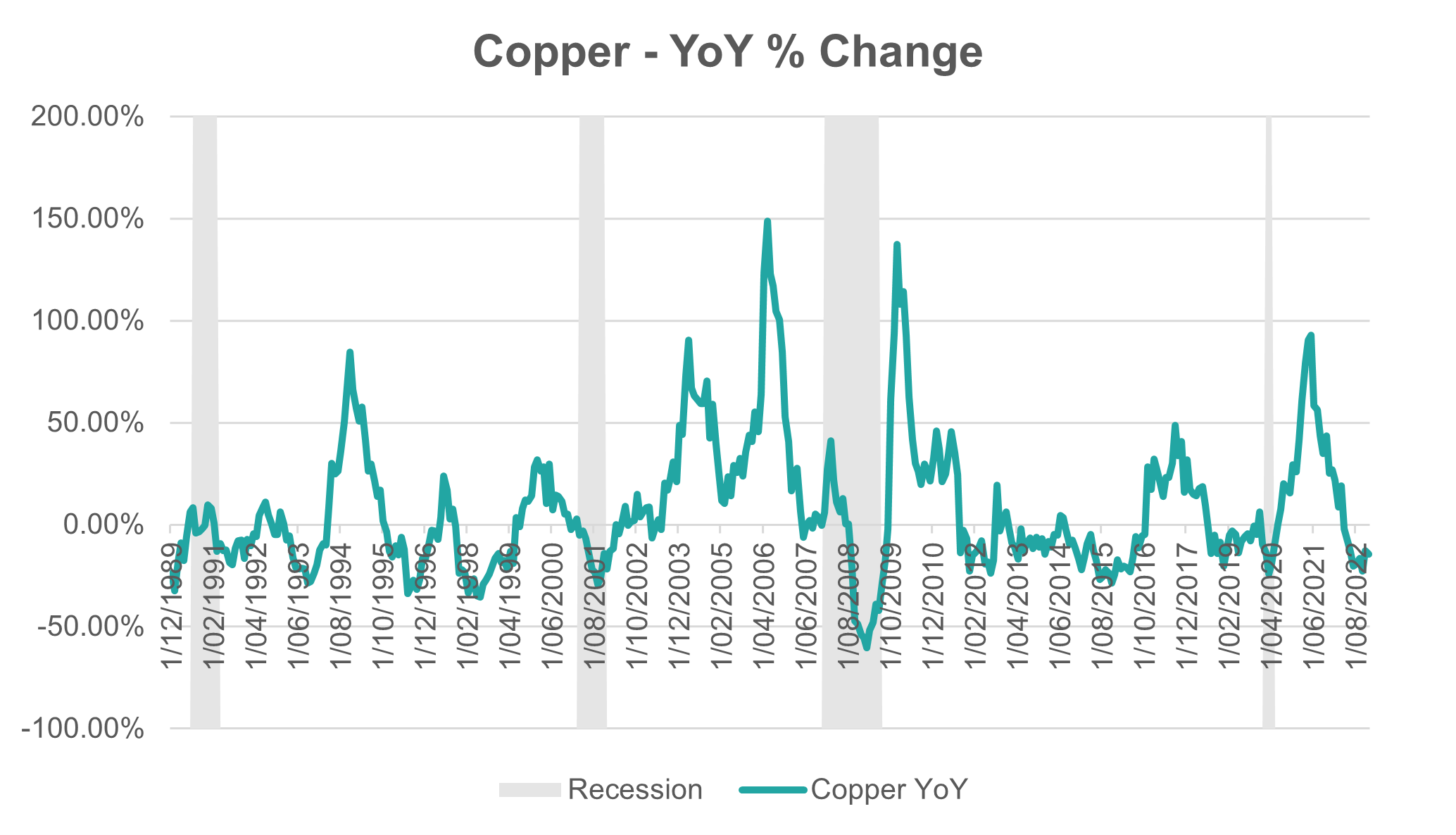
Credit spreads in the US are also not pricing in a recessionary future, in fact they are sitting almost exactly on their 30-year average levels. You can see the red box indicates the broad “recessionary” range, which would indicate markets seeking higher compensation for heightened default stress. Heightened stress today? Nowhere to be found.
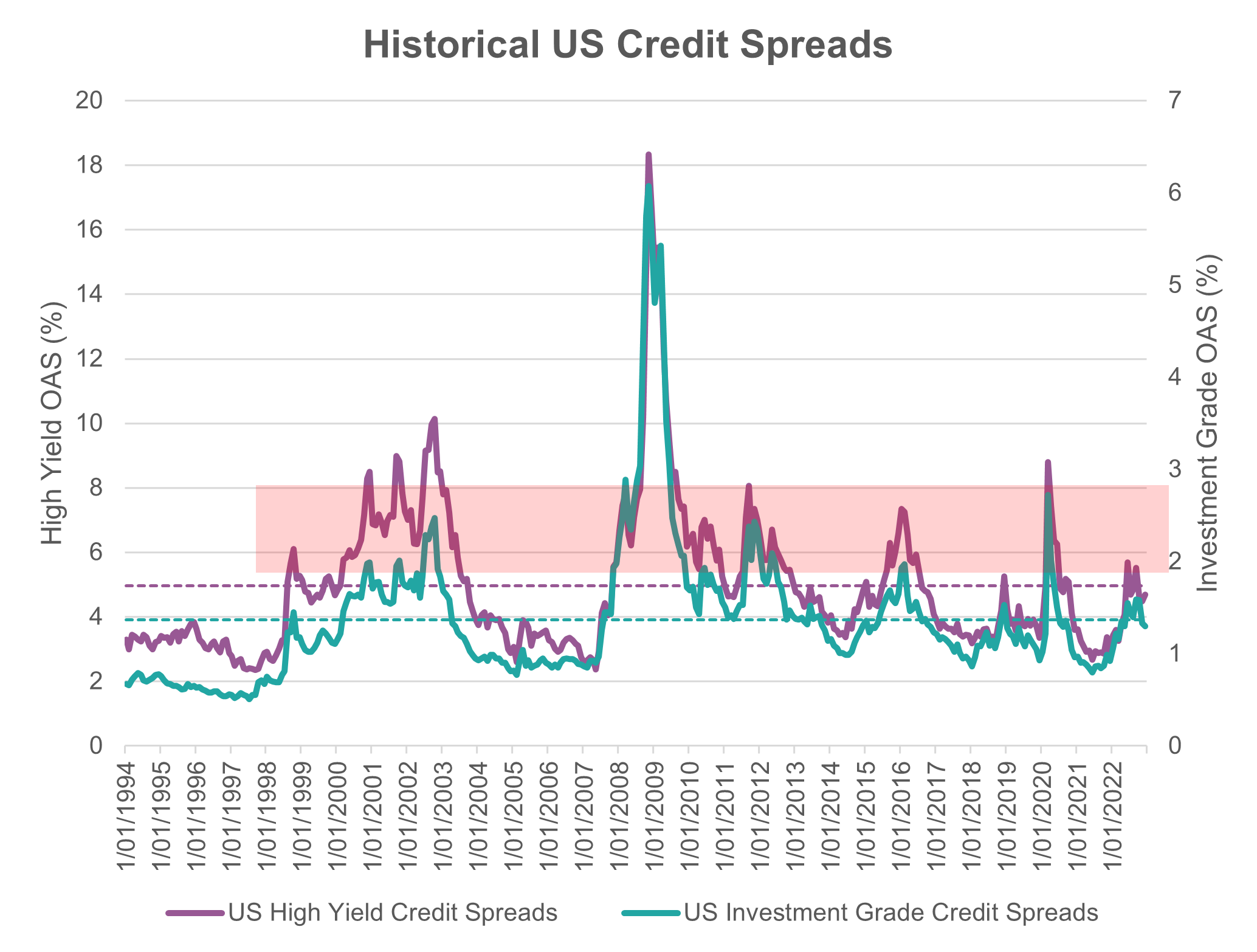
Earnings are also being rather optimistic about the future health of corporate America. We can see that during periods of recession (or slowdown, since COVID was technically not a recession), earnings in S&P 500 companies tends to fall around 50% YoY. At the moment the data is showing 6.25% YoY as of December 2022.
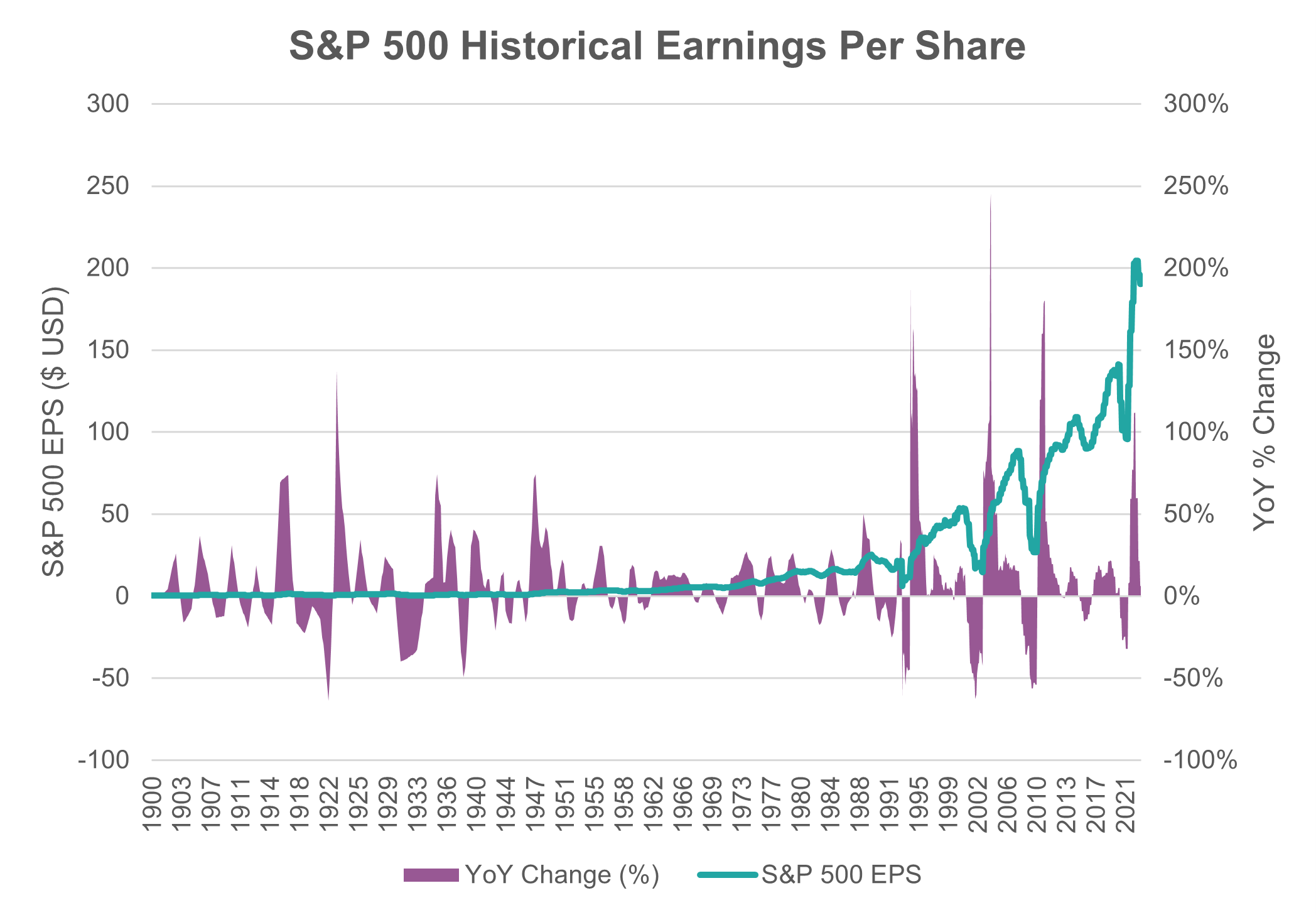
However, if we look at analyst estimates for 2023 earnings on Bloomberg, current EPS still sits at $223.67 and forward 12 months EPS is $221.62, which represents -0.92% fall YoY. Goldilocks, not recession.
Markets Don't Fear The Reaper
Note that if markets are pricing goldilocks and assuming soft landing/Fed pivot as base case, then all the RISK associated with portfolio construction is skewed to the downside.
There is a case to be made that the market priced in a recession last year, and is now looking through to a recovery. We would argue that the market pricing never reflected true “recession levels” throughout 2022, and if the market is now treating a pivot and soft landing as consensus, then the left tail risk for multi-asset portfolios is that consensus is wrong and a policy error/economic downturn may occur.
Aside from a strong positive shock to the upside, which the China reopening has already had a go at, there are very few things which can make Goldilocks a better narrative for the next 1-2 years, but there are plenty of things which could make the outlook worse and shock the market downwards.
We maintain a cautious approach to risk allocations at the moment, finding undervalued and more defensive sectors to be the best risk-reward exposures in this uncertain environment.
Never miss an insight
Enjoy this wire? Hit the 'like' button to let us know. Stay up to date with my content by hitting the 'follow' button below and you'll be notified every time I post a wire.
Not already a Livewire member? Sign up today to get free access to investment ideas and strategies from Australia’s leading investors. And while I ask the questions of some of Australia’s best strategists, economists and portfolio managers, if you’ve questions of your own, flick me an email on content@livewiremarkets.com.
5 topics

